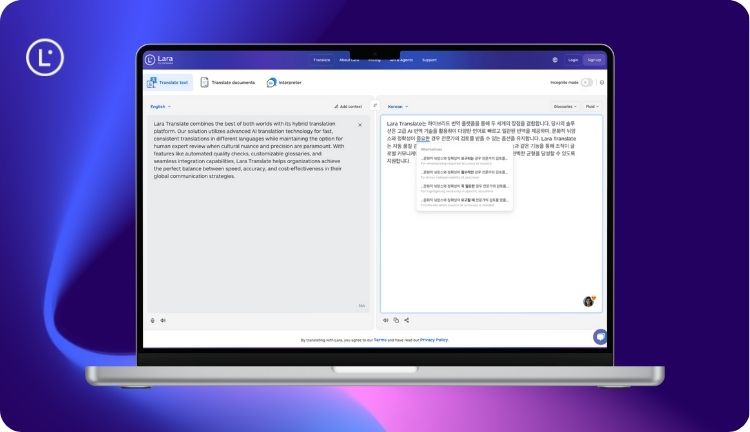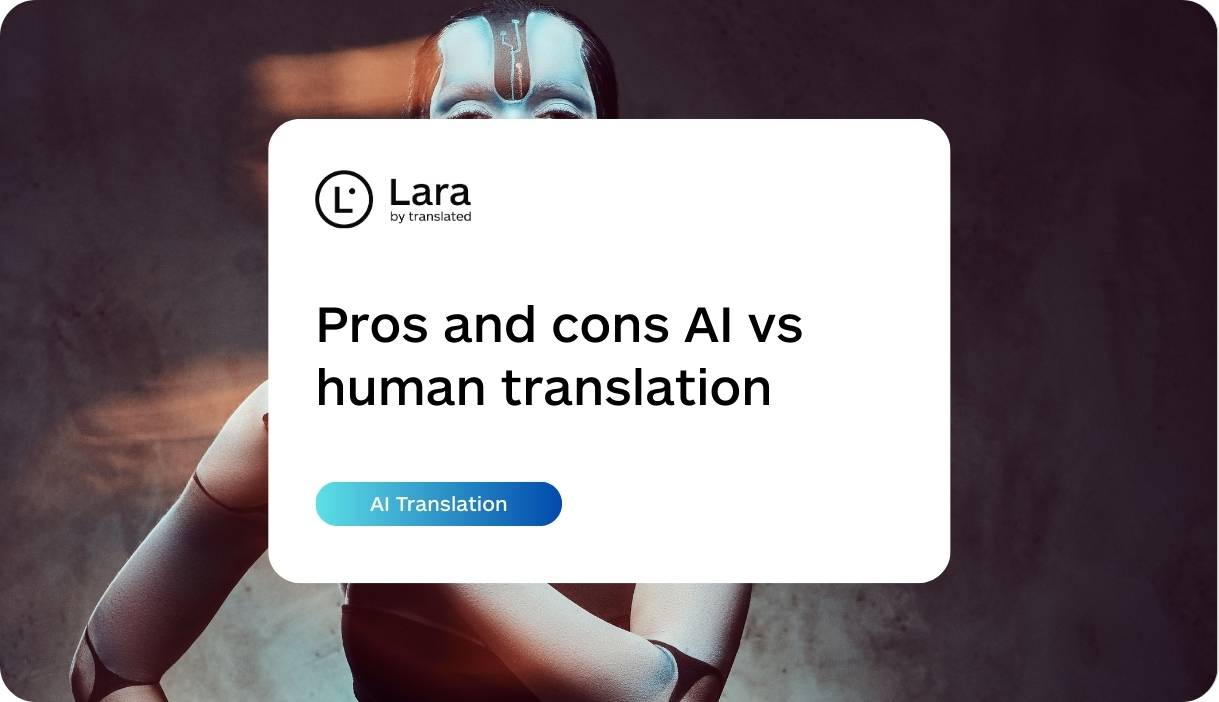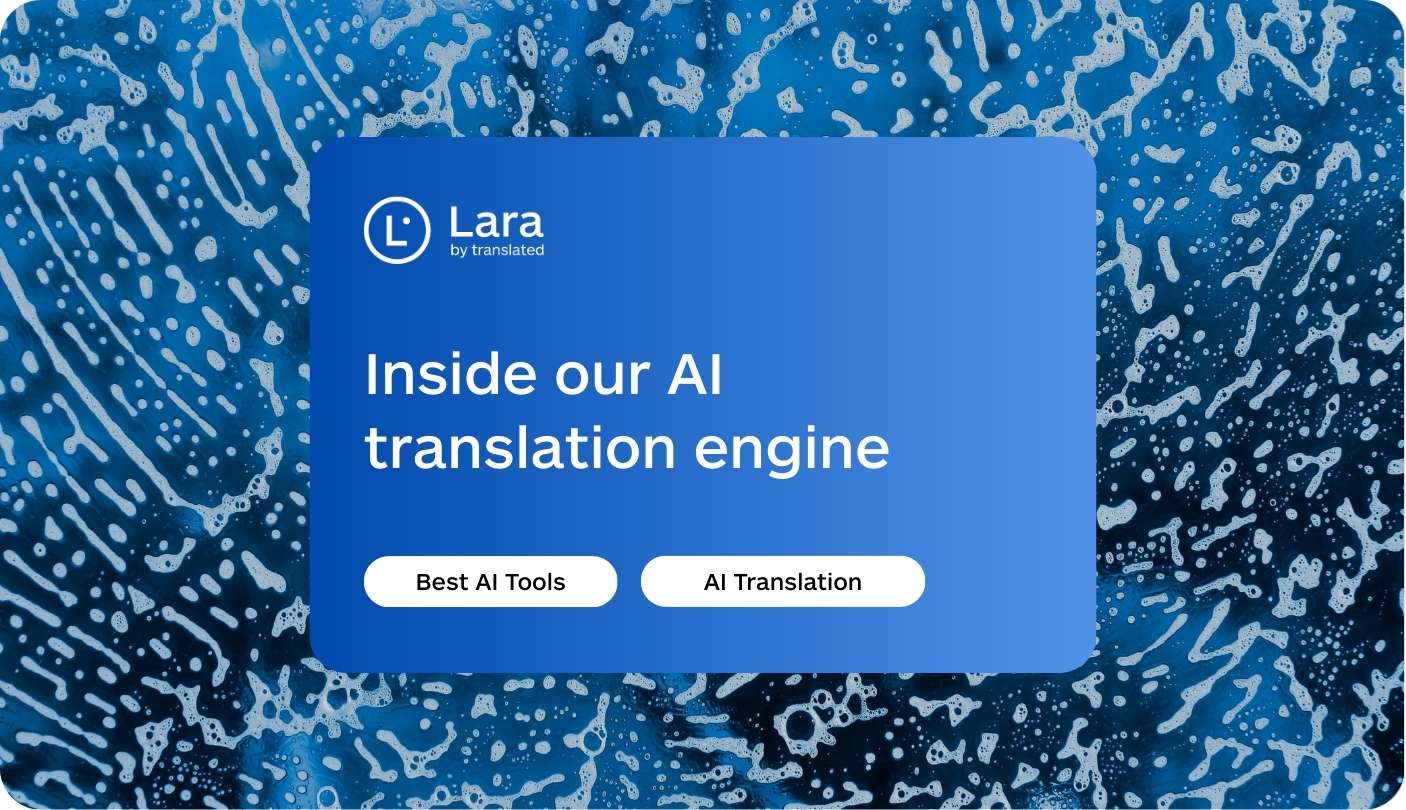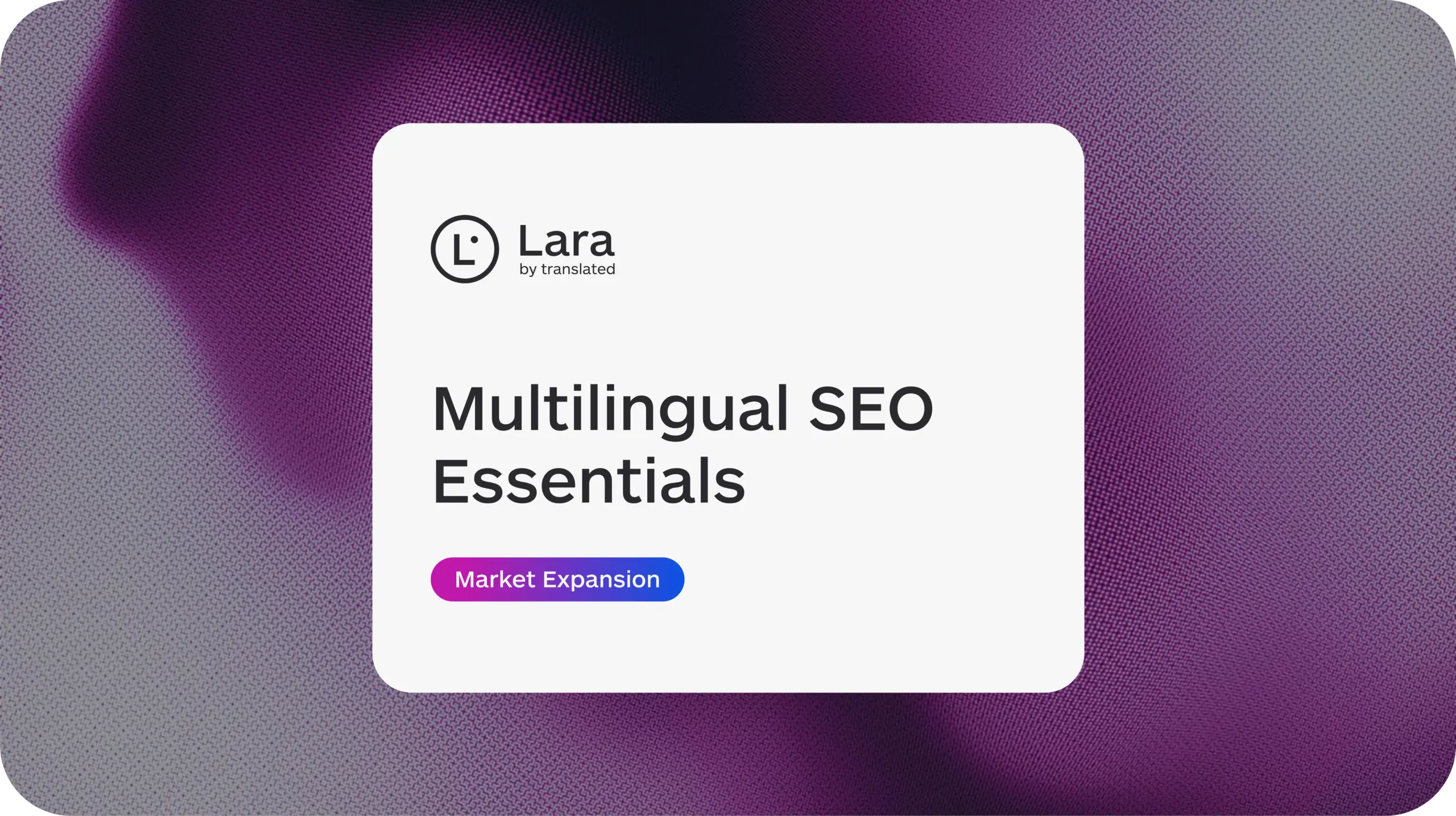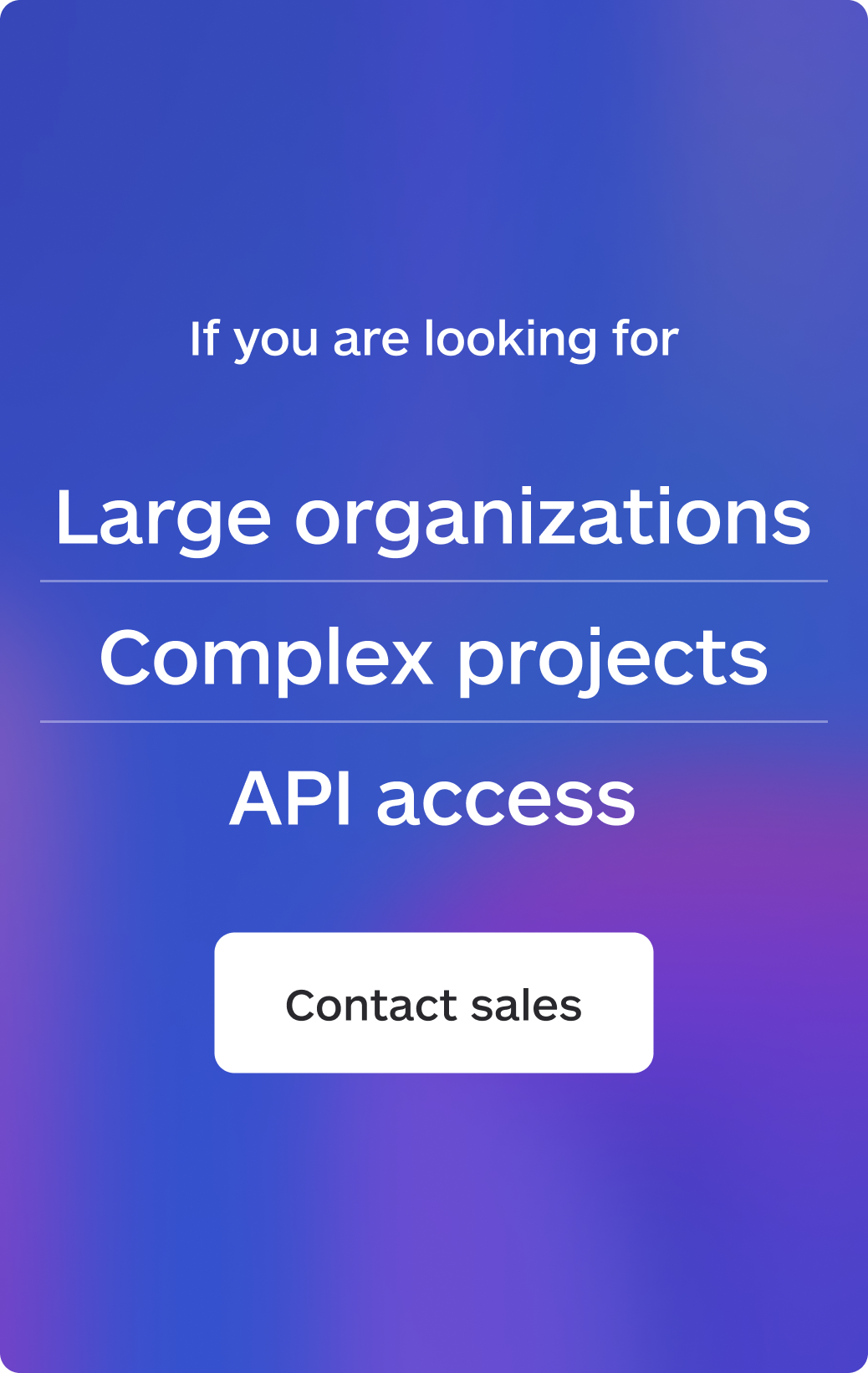Language barriers still stand in the way of many businesses trying to expand globally. But thanks to rapid advances in AI translation technology, companies now have powerful new tools to reach audiences around the world like never before.
Getting to know the real AI translation benefits isn’t just about staying on top of tech trends, it’s about unlocking a competitive edge in today’s fast-moving global market.
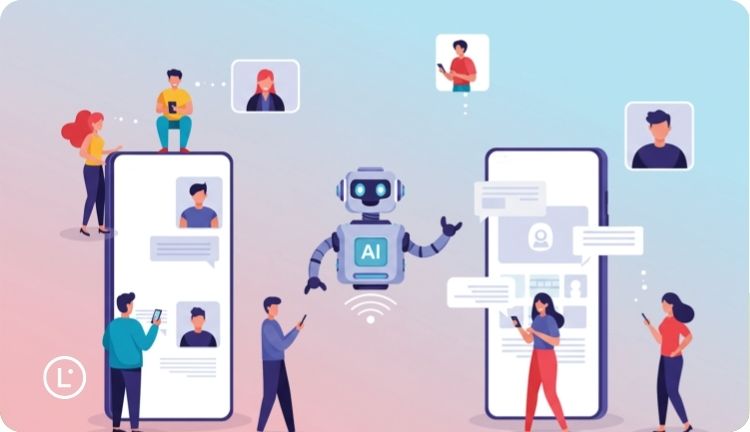
Why use AI for translation in your business strategy
The rapid advancement of artificial intelligence has transformed how businesses approach translation and localization. Modern AI translation systems leverage sophisticated neural networks and large language models (LLMs) to deliver translations that increasingly capture the nuances and context of human language.
This technology has matured beyond simple word-for-word replacement to become a strategic business tool that delivers tangible value. The advantages of machine translation extend far beyond mere convenience—they represent a fundamental shift in how companies can approach global communication.
Rather than viewing AI as a complete replacement for human capabilities, forward-thinking businesses recognize it as a powerful tool for enhancing human potential. By automating repetitive tasks and handling data-intensive processes, AI allows companies to focus their human resources on areas where they can provide the greatest value and leverage their unique capabilities.
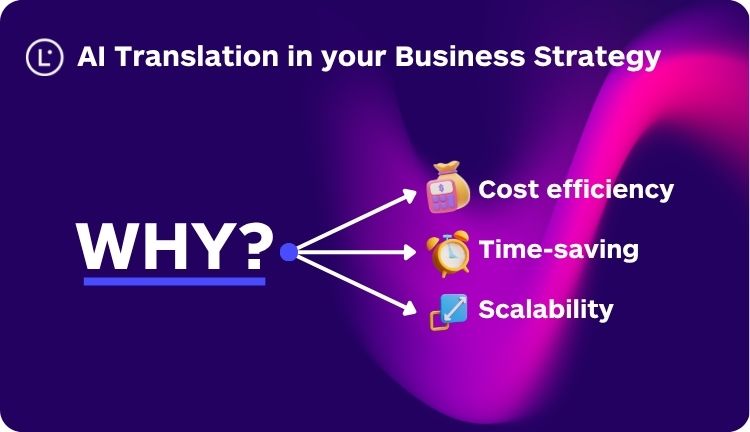
Cost efficiency with AI translation
Perhaps one of the most compelling reasons businesses turn to AI for translation is its remarkable cost-effectiveness. Traditional human translation services, while valuable, often come with significant costs that can quickly multiply when dealing with large volumes of content across multiple languages.
AI translation dramatically reduces these expenses by:
- Automating the initial translation process for substantial cost savings
- Eliminating the need for large in-house translation teams
- Reducing the time investment of subject matter experts
- Providing consistent pricing models regardless of language complexity
- Enabling more predictable budgeting for localization projects
For many businesses, especially small to medium enterprises, cost efficiency with AI translation makes global expansion financially viable for the first time. What once required significant capital investment can now be achieved with a fraction of the resources, democratizing access to international markets.
Time-saving with AI translation
In business, timing can be everything. AI speed vs human translation represents one of the most dramatic improvements in the localization process. While human translators typically process around 2,000 words per day, AI systems can translate millions of words in minutes.
This time-saving with AI translation delivers several key advantages:
- Accelerated time-to-market for products and services
- Rapid response to time-sensitive communication needs
- Ability to translate vast document libraries quickly
- Near-instantaneous translation of customer communications
- Reduced project management overhead
For businesses operating in fast-moving industries, this dramatic reduction in translation time can mean the difference between capitalizing on a market opportunity and missing it entirely. If you’re looking to leverage these advantages for your own company, our guide on how to expand your business with translations provides practical steps to get started.
AI translation for scalability
As businesses grow internationally, their translation needs typically expand exponentially. Each new market introduces additional content requirements across multiple channels—from marketing materials to product documentation, customer support, and legal documents.
AI translation for scalability offers a solution to this challenge by providing:
- Unlimited translation capacity without proportional cost increases
- Consistent translation quality across all content types
- Ability to handle demand spikes without delays
- Seamless integration with content management systems
- Support for an ever-expanding range of languages
This scalability ensures that translation processes won’t become bottlenecks as businesses grow, allowing companies to enter new markets without the traditional barriers of translation infrastructure.
How AI helps in localization beyond basic translation
While translation converts words from one language to another, localization adapts content to resonate with specific cultural contexts. AI-assisted localization now helps businesses navigate these complex cultural nuances with increasing sophistication.
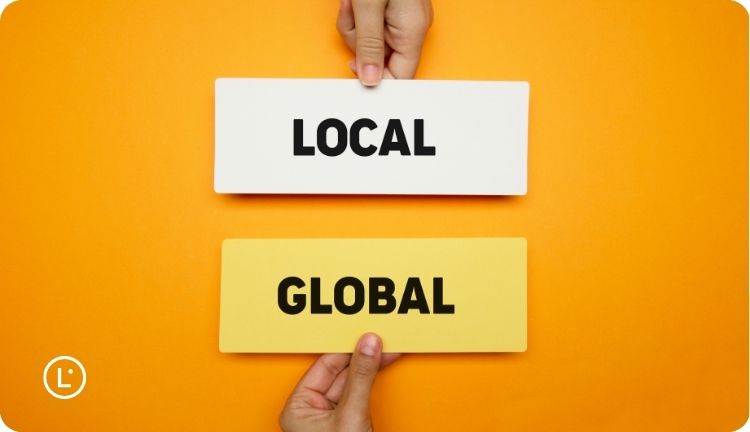
Modern AI systems can now:
- Recognize and adapt culturally specific references
- Adjust formatting for different regions (dates, currencies, units)
- Suggest tone modifications to match cultural expectations
- Flag potentially inappropriate content for human review
- Learn from regional preferences to improve future localizations
Beyond language processing itself, AI is transforming broader localization workflows by:
- Predicting and estimating the quality of localization jobs before they’re complete
- Optimizing project workflows by identifying potential bottlenecks
- Matching the most qualified linguists to specific project requirements
- Balancing resource pools of translators against current workloads
- Providing concrete data insights about areas needing improvement
This AI-driven translation strategy enables more authentic connections with international audiences, moving beyond literal translations to culturally relevant communications while simultaneously making the entire localization process more efficient.
Reliability of AI translation
The reliability of AI translation has improved dramatically with advances in neural machine translation and large language models. Today’s systems offer:
- Consistent quality across all content types
- Predictable outcomes for planning purposes
- Significant reduction in translation errors
- Ability to maintain brand voice across languages
- Transparent quality metrics for evaluation
For businesses, this reliability translates to confidence in their multilingual communications, reducing the risk of miscommunication or cultural missteps in important business contexts.
How Lara Translate enhances AI translation benefits
Lara Translate stands at the forefront of language tech for business, offering an advanced AI translation platform specifically engineered to maximize these benefits for organizations of all sizes. What sets Lara apart is its proprietary neural network architecture that combines the power of large language models with specialized training in business communications.
Lara’s platform excels in recognizing industry-specific terminology and maintaining consistency across all your content. Its adaptive learning system continually improves translations based on your feedback and industry-specific glossaries, ensuring that your business communications maintain their professional tone and technical accuracy regardless of the target language.
AI translation for global growth
Ultimately, the true value of AI translation lies in how it enables AI translation for global growth. By removing language barriers, businesses can:
- Enter new markets more rapidly and with lower investment
- Test international reception before major commitments
- Build authentic connections with diverse customer bases
- Respond quickly to global opportunities and challenges
- Create consistent brand experiences across all markets
Companies leveraging AI translation value find themselves able to pursue international strategies that would have been logistically impossible or prohibitively expensive just a few years ago.
FAQ: Benefits of AI translation
What makes AI translation better than traditional methods?
AI translation combines speed, cost-efficiency, and increasingly accurate results. Unlike traditional methods that scale linearly with content volume, AI translation systems provide exponential efficiency gains while maintaining quality, especially for business and technical content where context patterns are more predictable.
Can AI translation completely replace human translators?
While AI has made remarkable progress, most experts recommend a hybrid approach for critical communications. AI excels at handling high volumes and technical content, while human expertise remains valuable for creative, culturally sensitive, or legally binding materials. This combination leverages the strengths of both approaches.
In fact, businesses achieve the greatest performance improvements when humans and machines work together strategically. AI handles repetitive, data-heavy tasks with speed and consistency, while human translators focus on creative adaptation, cultural nuance, and quality assurance—providing the greatest value where their unique capabilities matter most.
How accurate is AI translation for business documents?
For business documents with straightforward language and established terminology, modern AI translation typically achieves 85-95% accuracy. Industry-specific AI solutions like Lara Translate can further improve this rate through specialized training and customized terminology databases.
If you’re working with PDFs, presentations, or other document types, you may want to check out our quick guide to document translation for business to learn specific techniques for optimizing results across different file formats.
What types of content benefit most from AI translation?
Technical documentation, product descriptions, support content, internal communications, and standardized business documents show the greatest immediate benefit from AI translation. These content types typically follow consistent patterns and terminology that AI systems excel at recognizing and translating accurately.
How does AI translation impact SEO for international websites?
AI translation can dramatically accelerate international SEO efforts by enabling rapid content localization. However, for optimal results, businesses should combine AI translation with targeted keyword research in each market and human review to ensure search terms are contextually appropriate for local audiences.
This article is about:
- How AI translation benefits drives business growth through cost-effective, time-saving solutions
- The scalability and growing reliability of AI translation for multilingual market expansion
- Why combining AI efficiency with human expertise ensures culturally accurate localization
- How tools like Lara Translate enhance translation workflows and deliver enterprise-grade results

